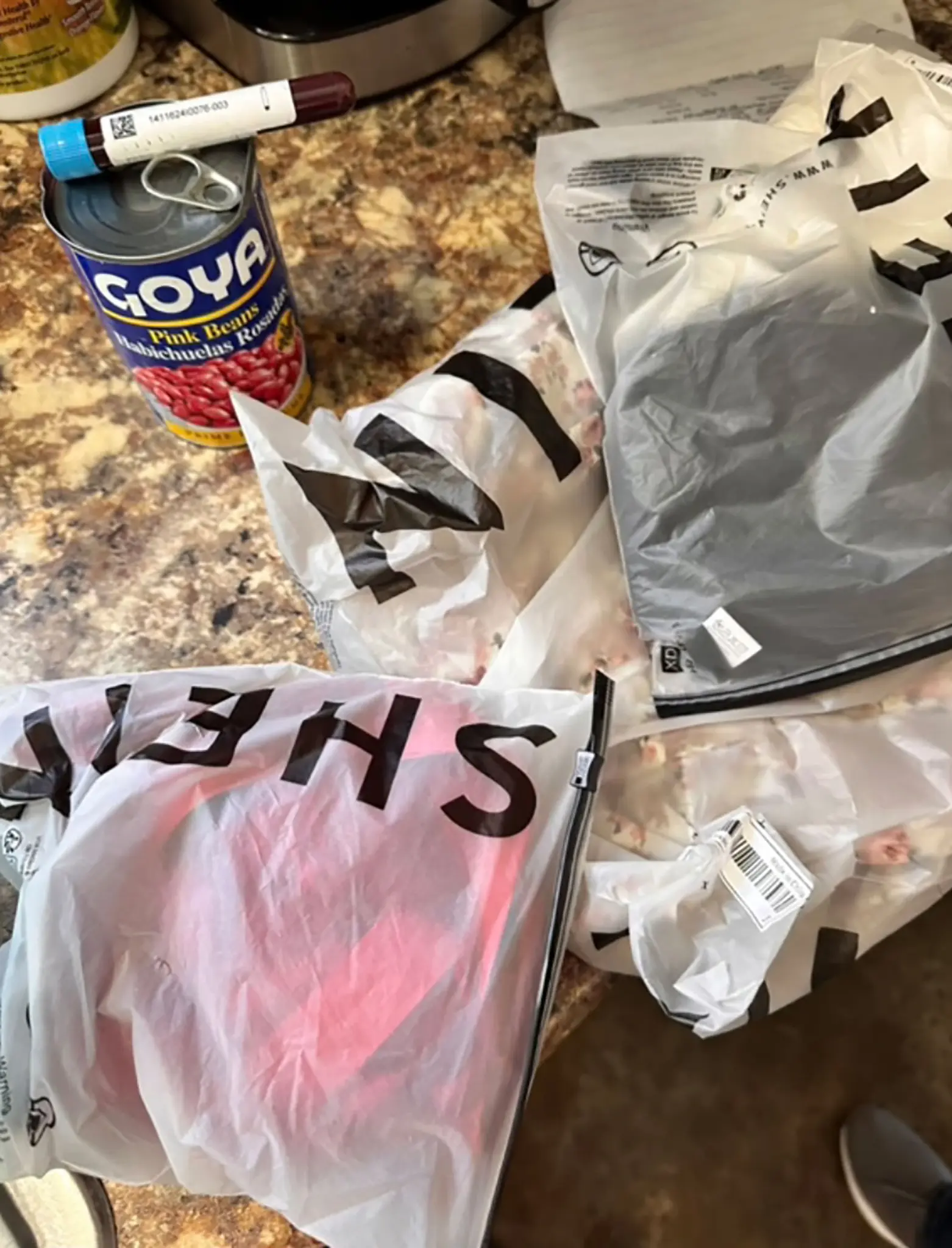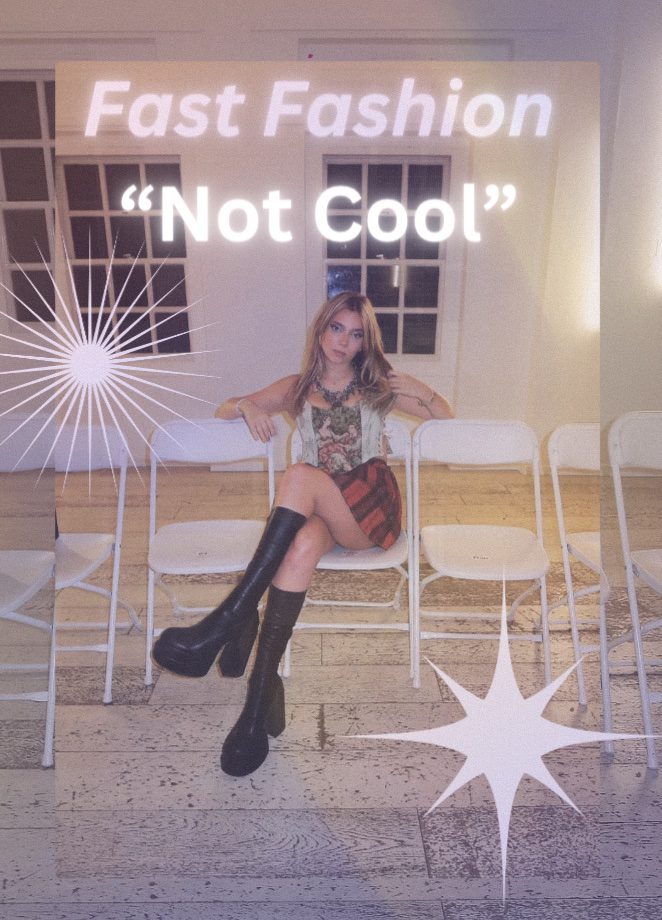All FIDM students and anyone in the fashion industry should be appalled at this partnership and protest it by signing this petition, calling on FIDM to end the SHEIN partnership and to partner with a sustainable fashion brand.
FIDM and SHEIN announced a partnership for a new scholarship program and curriculum for students called SHEIN Project Launchpad. 12 students were selected to each receive a $40,000 scholarship provided by SHEIN, with the opportunity to create a 5-10 piece collection that will be sold on SHEIN’s website as a part of the company’s designer incubator program called SHEIN X.
Sounds great right? Design students get money and a shot at a clothing line at a global fashion company. And it would be…if SHEIN wasn’t the worst fast fashion giant on the planet.
FIDM teaches courses on sustainability in fashion and then partners with one of the greatest fast fashion offenders? This makes NO sense.
FIDM students are upset about this partnership because it suggests FIDM condones SHEIN’s shocking human rights violations and their manufacturing practices that are a detriment to our environment.
Fast fashion operates on a business model that prioritizes producing large quantities of clothing quickly and at low cost. This approach requires significant amounts of resources such as water, energy, and raw materials like cotton and synthetic fibers. The extraction and production processes associated with these resources contribute to pollution, deforestation, depletion of natural resources and pollution.
Don’t get me wrong, I think those 12 FIDM students should get their scholarship money. I am not suggesting their scholarships get pulled – not at all.
What I, and many of my fellow students, oppose is that our college is partnering with SHEIN. How can any college or university that is supposed to be teaching students about careers for the future of fashion and sustainability – not care about the future?
SHEIN is Accused of Shameful Worker Violations
Reports have exposed that SHEIN garment workers in Chinese factories work 75-hour shifts in unsafe workshops that lack basic safety protocols like windows and emergency exits.
Matter of fact, a UK documentary went undercover to spotlight how factory workers were forced to pull 17-hour shifts to make hundreds of garments every single day. Get this – they only made $20 a day AND if they made any mistakes, they could be punished by having that rate docked $14. So a mistake meant they might make $6 a day for 17 hours – that’s .35 cents an hour. Crazy right?
Public Eye, a Swiss watchdog group, reported that SHEIN even violated Chinese labor laws. Wired investigated SHEIN, and published a lengthy article about how the fast fashion giant ultimately hurts both workers and consumers. Good on You calls SHEIN the “biggest and baddest ultra fast fashion brand in the world.
SHEIN has responded to these accusations saying that all suppliers will be required to comply with the International Labor Organization. The company also says they are creating an in-house team to monitor supply chain partners and will be conducting regular audits.
But since SHEIN is a private company, there is very little transparency.
One of the few people to visit one of SHEIN’s factories is journalist Wu Peiyue who wrote an expose, The Shady Labor Practices Underpinning Shein’s Global Fashion Empire. In his story for Sixth Tone he writes, “These workshops frequently flout Chinese labor laws and are considered a fire risk, local factory owners and labor experts told Sixth Tone. Many are illegal businesses and have no formal contract with SHEIN, making it difficult for the company to verify whether workers are well-treated.”
SHEIN Influencers Got All Expense Paid Trip to Chinese Factories to Show the Real Deal
In a potentially brilliant marketing ploy that completely backfired, SHEIN invited a group of influencers to visit their manufacturing plants.The company wanted to allegedly be “transparent” by showing influencers the real “inside look” at how their garments are designed, manufactured and shipped at the plant in Guangzhou, China.
Influencers did come and did show what they saw but got criticized for falling for a brilliant marketing spin. What plant did they really go to?
This video doesn’t exactly look like the plants that undercover investigators have visited.
Many influencers ended up taking down their glowing reviews in embarrassment. The fact they fell for what appears to be a marketing stunt ended up to be worse PR for the influencers themselves
US Lawmakers Urge SEC to Crack Down on SHEIN Over Labor Practices
U.S. Representative Jennifer Wexton (D-VA) and John Rose (R-TN) are leading a bipartisan effort with 22 of their colleagues to pressure the Securities and Exchange Commission (SEC) to require SHEIN to certify that their products are not made using “forced labor”. SHEIN has come under fire for mistreatment of Uyghurs, a marginalized group in China and for falsifying records of forced or underpaid workers in the Xinjiang Uyghur Autonomous Region of China.
A new congressional report, “Fast Fashion and the Uyghur Genocide”, details how SHEIN gets around import regulations established by a 2021 law to prevent forced labor. According to this report, SHEIN finds loopholes with its vast network of Chinese suppliers and direct-to-consumer models to bypass the Uyghur Forced Labor Prevention Act.
The United Nations’ rights council voted down a Western-led (U.S., U.K. and Canada) motion to hold a debate about human rights abuses by China against Uyghurs and other Muslims.
SHEIN is currently a private company but it reportedly plans to go public with an US IPO but members of Congress say the company must stop using Uyghur force labor before it’s allowed to register for the U.S. exchange.
“We strongly believe that the ability to issue and trade securities on our domestic exchanges is a privilege, and that foreign companies wishing to do so must uphold a demonstrated commitment to human rights across the globe,” said in a letter to the SEC.
SHEIN has responded to these accusations saying that all suppliers will be required to comply with the International Labor Organization and that they are creating an in-house team to monitor supply chain partners and will be conducting regular audits.
So with ALL THAT INFORMATION above…does it seem like a good idea for a “prominent” college for fashion and design in LA to work with SHEIN.
But it doesn’t stop there. Now let’s talk about why SHEIN’s role in pollution.
Is SHEIN the Great Polluter?
Before we give SHEIN shit, let’s look at the big picture. It’s not just SHEIN, the fashion industry is a major contributor to the current climate crisis, producing 2.1 billion tons of greenhouse gas emissions according to a report by McKinsey called Fashion on Climate. 2.1 billion tons equals 4% of the global total that makes it too close to catastrophic global warming changes.
So we need to look at the entire fashion industry. Fast fashion encourages consumers to constantly buy new clothes and discard them quickly, leading to a significant increase in textile waste.
That said, SHEIN is the king of the hill (or shall we say landfill) when it comes to fast fashion.
Quantity OVER Quality
The sheer volume of clothing that SHEIN produces is part of the problem. An investigation by Rest of World, states that SHEIN added anywhere from 2,000 to 10,000 individual styles to its app each day between July and December of 2021. According to several news articles back in 2022, SHEIN CEO Molly Miao, herself, said the company releases between 700 and 1000 new items every day.
According to Good On You, SHEIN’s environmental ratings are overall “Very Poor”. The watchdog organization states that the company shows no evidence of taking meaningful action to reduce or eliminate hazardous chemicals during manufacturing. There’s no evidence the company tries to reduce its climate impact or minimize microplastics.
SHEIN has issued a Sustainability and Social Impact Report. The company claims it’s committed to using more sustainable textiles and limiting greenhouse gas emissions. According to Wired, an audit the company conducted of its suppliers discovered 83% of its more than 700 suppliers were operating with major risks.
I could go on and on and on about SHEIN and everything bad the company represents.
But let’s get to the main point of this blog. If you are a university or a trade school teaching students about the future of industries, should those professors and schools work with industries that are so damaging to our environment?
That’s the question. The answer for me is an emphatic NO! And it’s not just from me.
In a recent article in Los Angeles Magazine, reporter Julius Miller and former FIDM student interviewed students about the SHEIN partnership.
“Real funny how they [FIDM] gets students to go to their school by promising a devotion to sustainability,” Welch, a current student at the school, tells Los Angeles. “Then less than two years later they announce a collaboration with SHEIN, one of the leading brands in fast fashion and unsustainable fashion practices.”
Julius Miller, Los Angeles Magazine
So I ask FIDM, to immediately END their partnership with SHEIN and to engage with a sustainable fashion brand to honor the student scholarships so the designers of the future can learn best practices in sustainable fashion.
I’ve started a petition and I’m hoping to get enough signatures to get the attention of my school.
Please support this cause and sign the petition here.
Lexy Silverstein is a Sustainable Fashion Consultant

If you’d like to email me, you can reach me at LexySilverstein@gmail.com
Follow me on my socials: Instagram: @lexysilverstein Youtube: Lexy Silverstein Twitter: @eLEXYfy TikTok: @lexysilverstein Facebook: Lexy Silverstein Liketoknow.it/lexysilverstein










